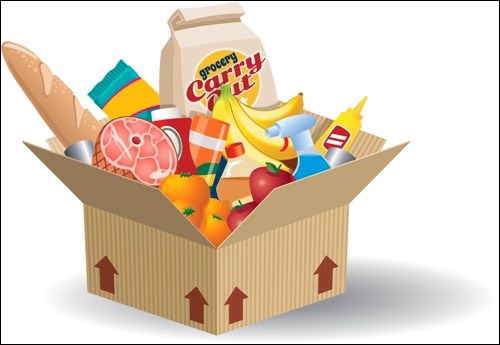GUELPH, Ont. — Food prices are up four per cent over last year in Canada - mainly because of the cheap loonie and more expensive imports. This has come as a shock to Canadians used to spending an ever-declining share of income on food. Worse yet, further increases likely await - and for a very different, more permanent reason.
Canadian consumers have had a good run, with food now representing only about 10 per cent of annual income - about half of what it was 50 years ago, according to Statistics Canada. That decline is largely the result of changes in farming practices and improved agricultural technology. Improvements in pest control, crop and livestock genetics, communication and farm mechanization have meant big increases in productivity and efficiency, and decreases in inflation-adjusted costs of production and farm-gate prices.
On balance, farmers have benefited. But consumers are the big winners.
We have by no means exhausted all opportunities to improve farm productivity and reduce costs and prices further. But a counter trend is becoming dominant - towards higher on-farm costs and lower crop yields, driven by a combination of government actions and consumer and retailer demands.
There's a growing tendency for governments - especially in Europe, but spreading to Canada - to restrict the technologies farmers can use. The examples include genetically-enhanced crops and pesticides. The reasons are largely political and are imposed as precautionary measures. Essentially, the message is: There is no significant evidence of any harm but we'll ban it anyway.
An even bigger driver may be consumers - along with food manufacturers and retailers always eager to exploit profitable new market opportunities.
More consumers want to buy - and are paying higher prices for - 'organic' or 'natural' foods. They want products free of anything claimed by someone to be bad. Many food suppliers are eager to comply.
Ignoring the issue of whether the result is really better for health or environment (it's doubtful), the effect on agricultural productivity is clear. Government surveys show organic crop yields average 30 to 40 per cent lower than for non-organic (it varies by crop); costs of production are much higher, and organic price premiums are consequentially large as well.
As a farmer, I could receive prices 250 per cent of normal for growing organic soybeans and 120 per cent of normal for growing non-genetically enhanced varieties. I would also have correspondingly higher costs of production and lower yields on my farm. Those costs and price premiums are transferred to consumers.
While I know of no formal public survey, anecdotal evidence shows that the shift by some food producers to more 'does-not-contain' (particularly 'non-GMO') manufacturing ingredients has meant higher prices. (It has meant lower nutritional value in some cases, too, because vitamins produced by genetically-engineered micro-organisms are commonly eliminated.) Higher costs of production for farmers cannot mean anything other than higher food prices.
This is no economic threat to affluent Canadians. Even a 50 per cent increase in food prices still would absorb only 15 per cent of average Canadian family income.
But many Canadians aren't affluent. If government and food-industry actions reduce availability of lower-cost foods, many low-income families will suffer. I have difficulty with the ethics of that.
In addition, a trend to lower productivity and higher costs will mean farmers need more land to produce the same amount of food. That's a problem even in sparsely populated Canada, and impossible globally.
The trend may mean greater imports from countries where low-tech, laxer safety standards and cheap labour prevail. Half of the organic soybeans now used in North America come from India and China.
The pattern of declining food expenditures for Canadians is likely over. Look for more food price increases in years ahead.
Terry Daynard farms near Guelph, Ont., and is a former associate dean for research at the University of Guelph.
www.troymedia.com




